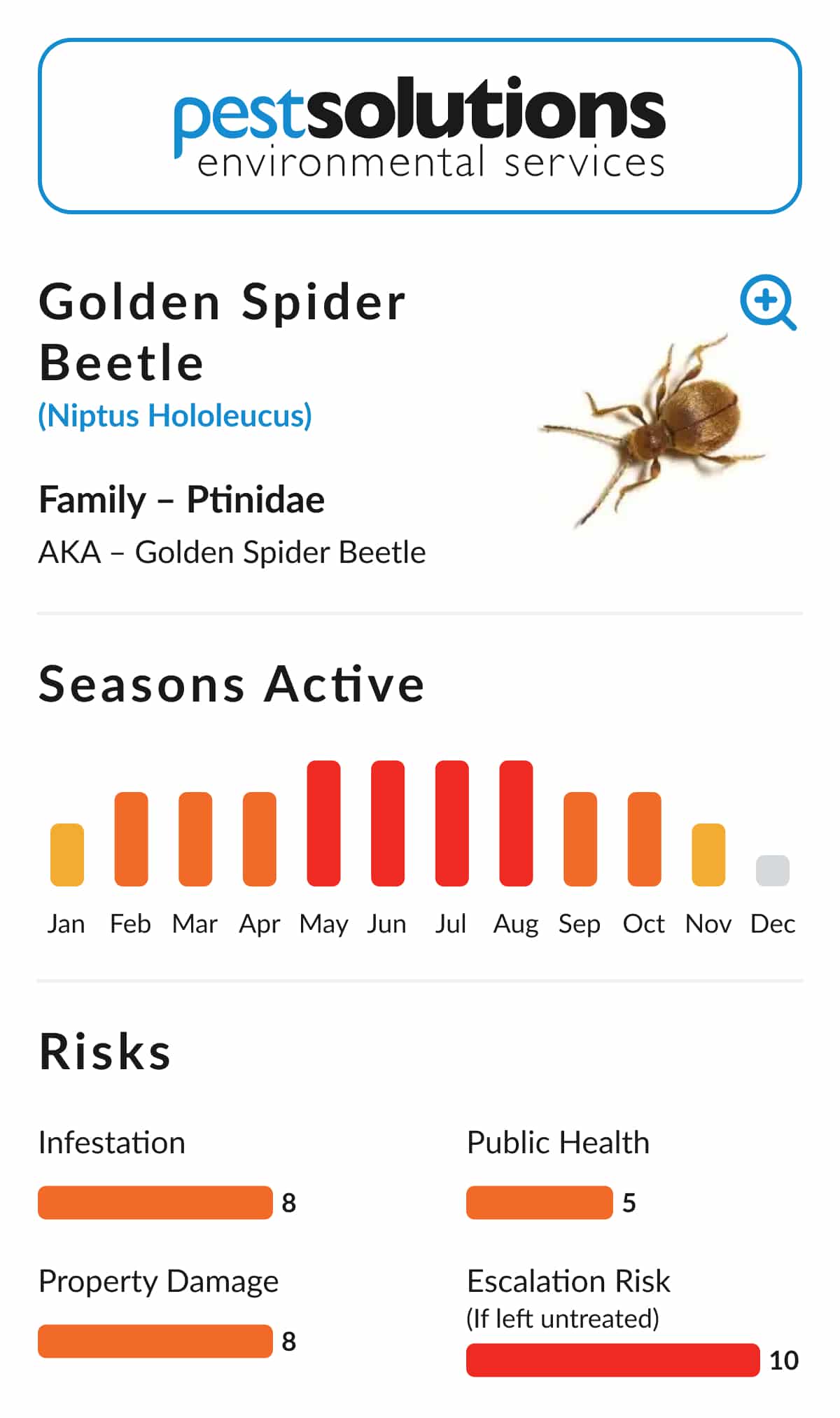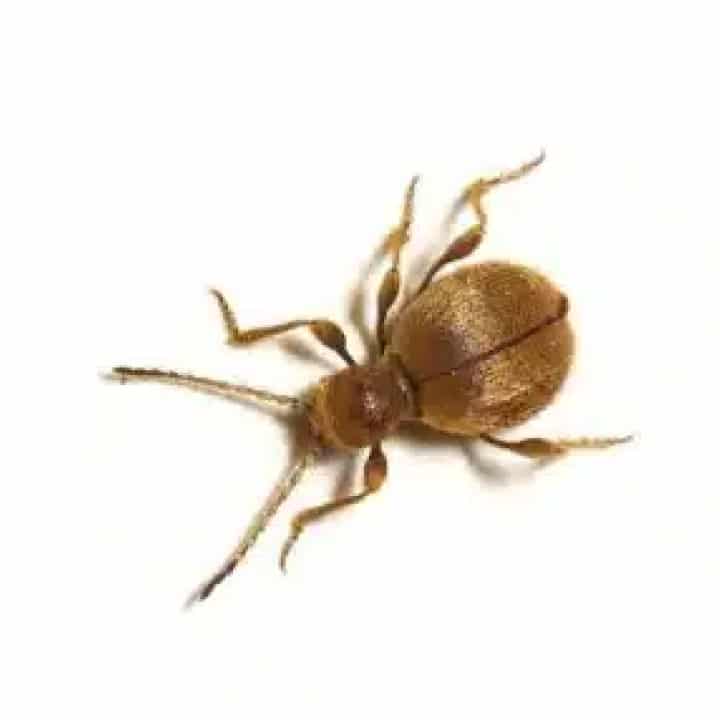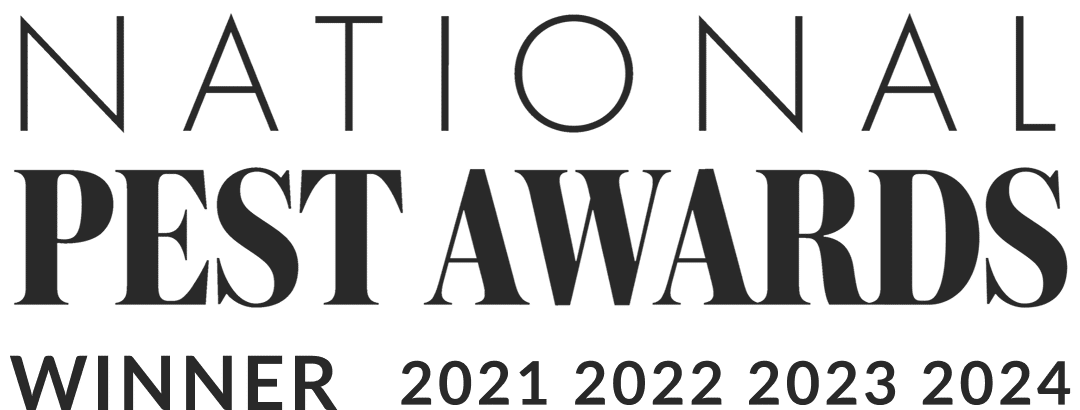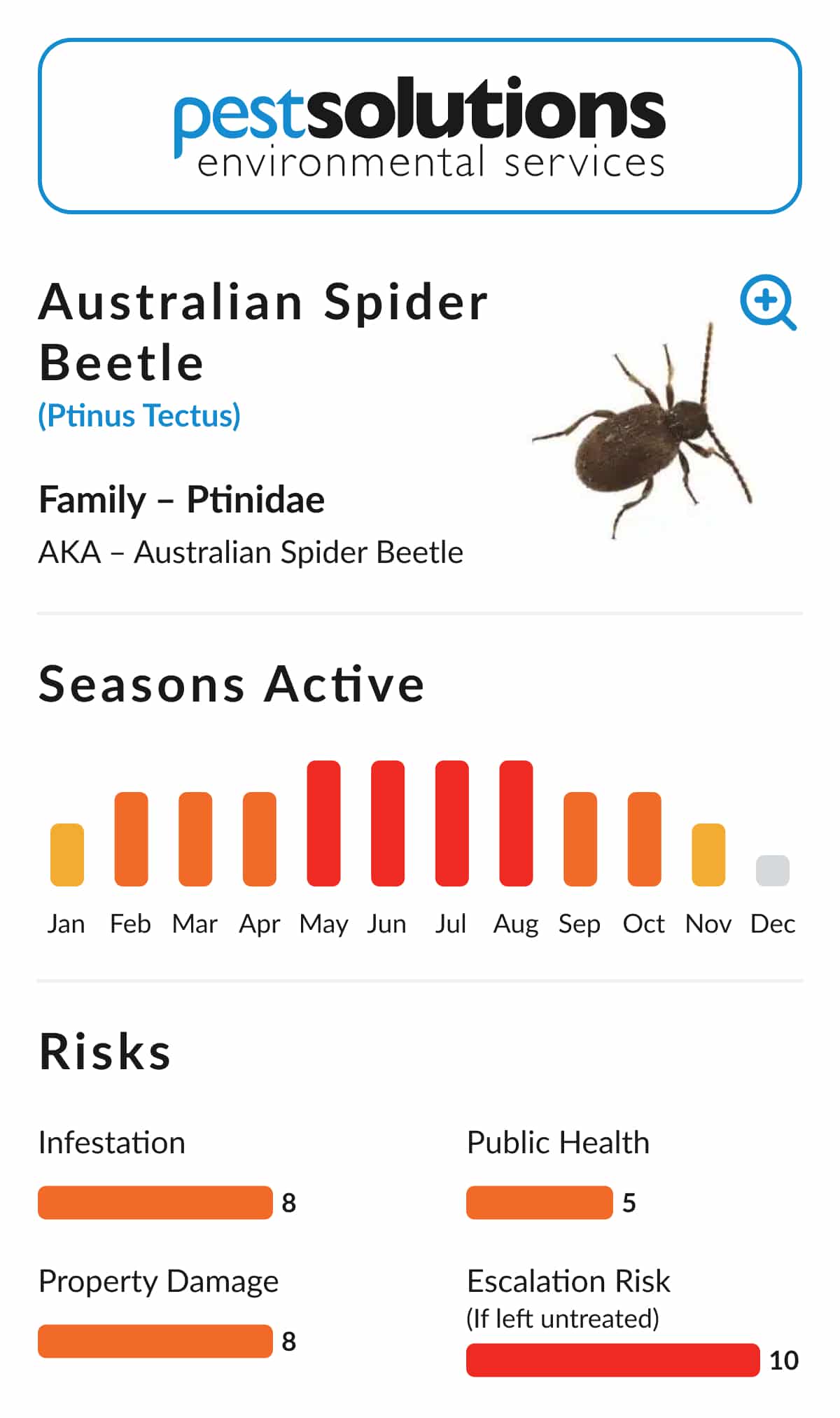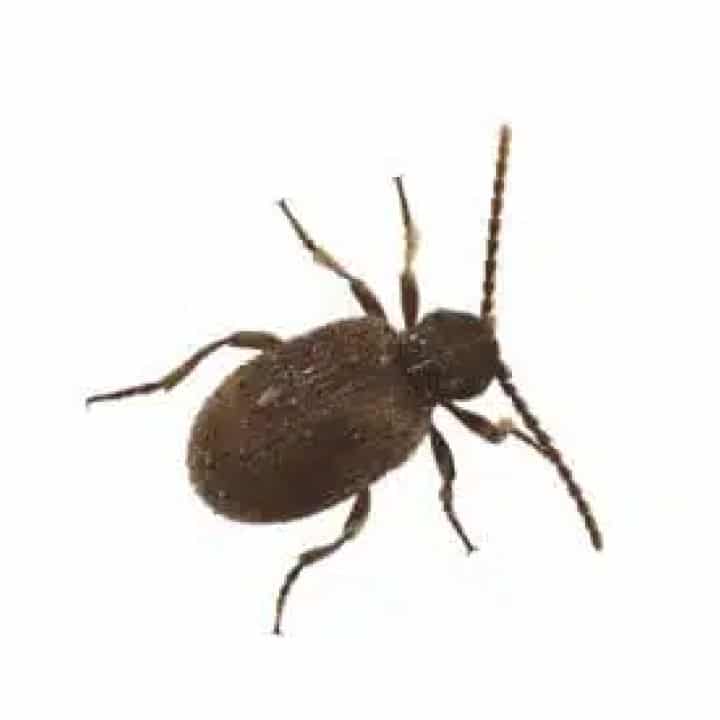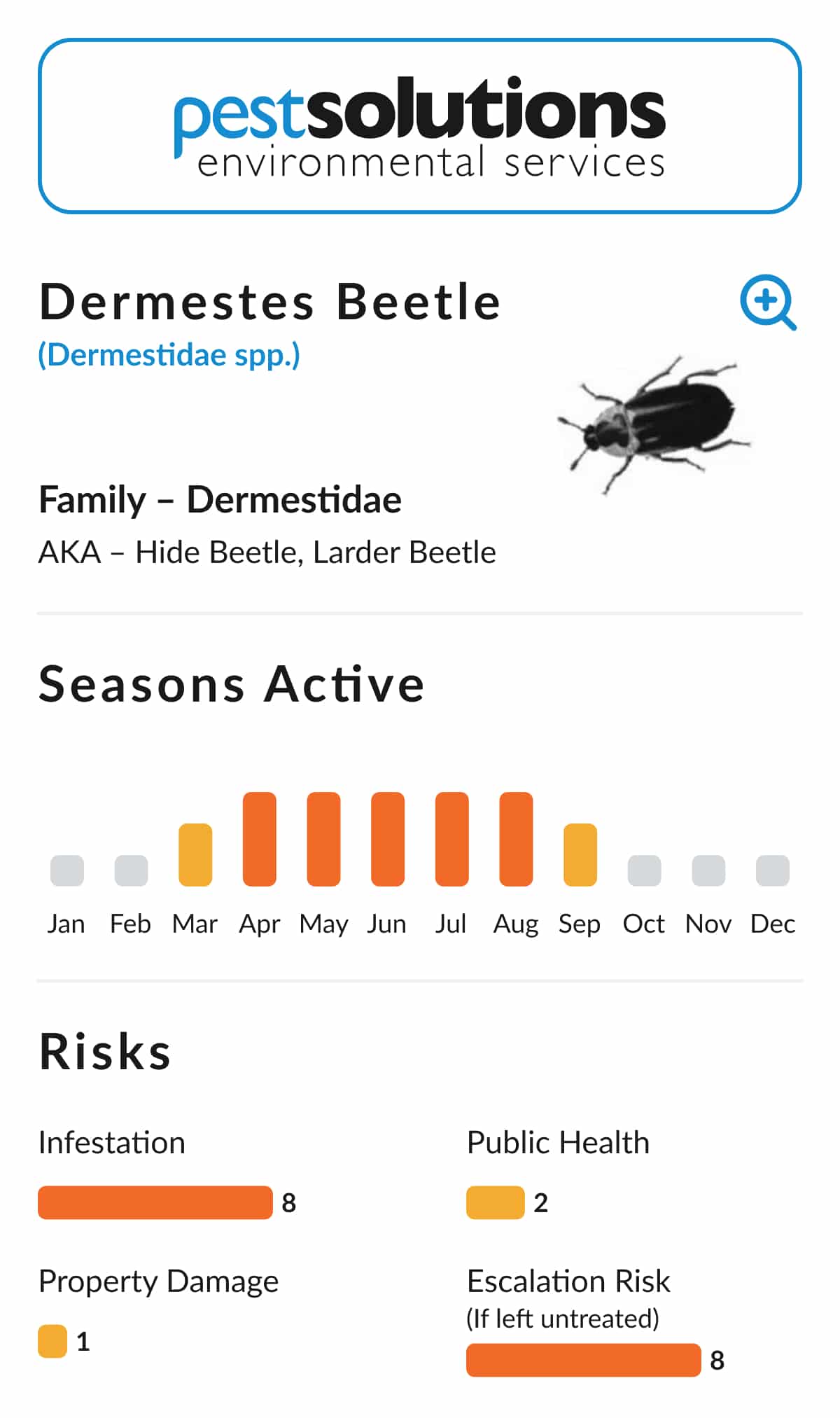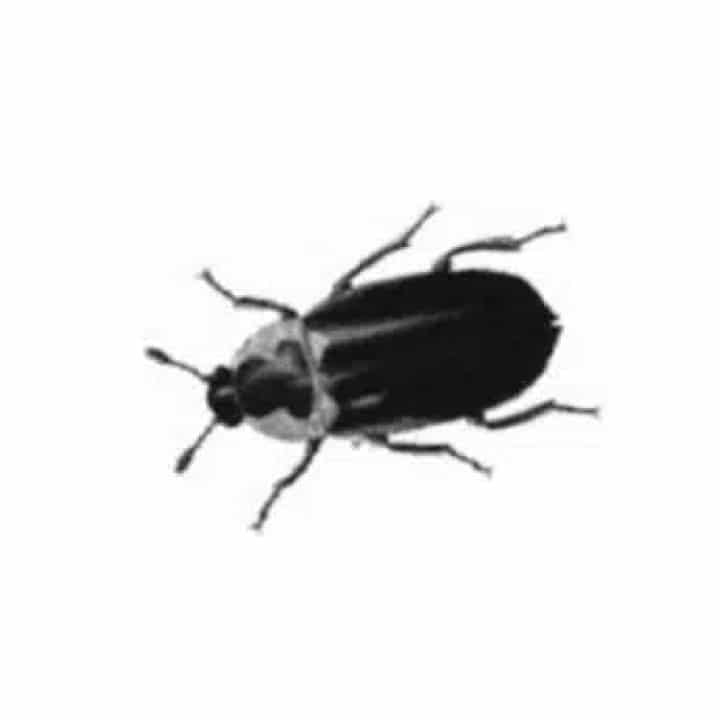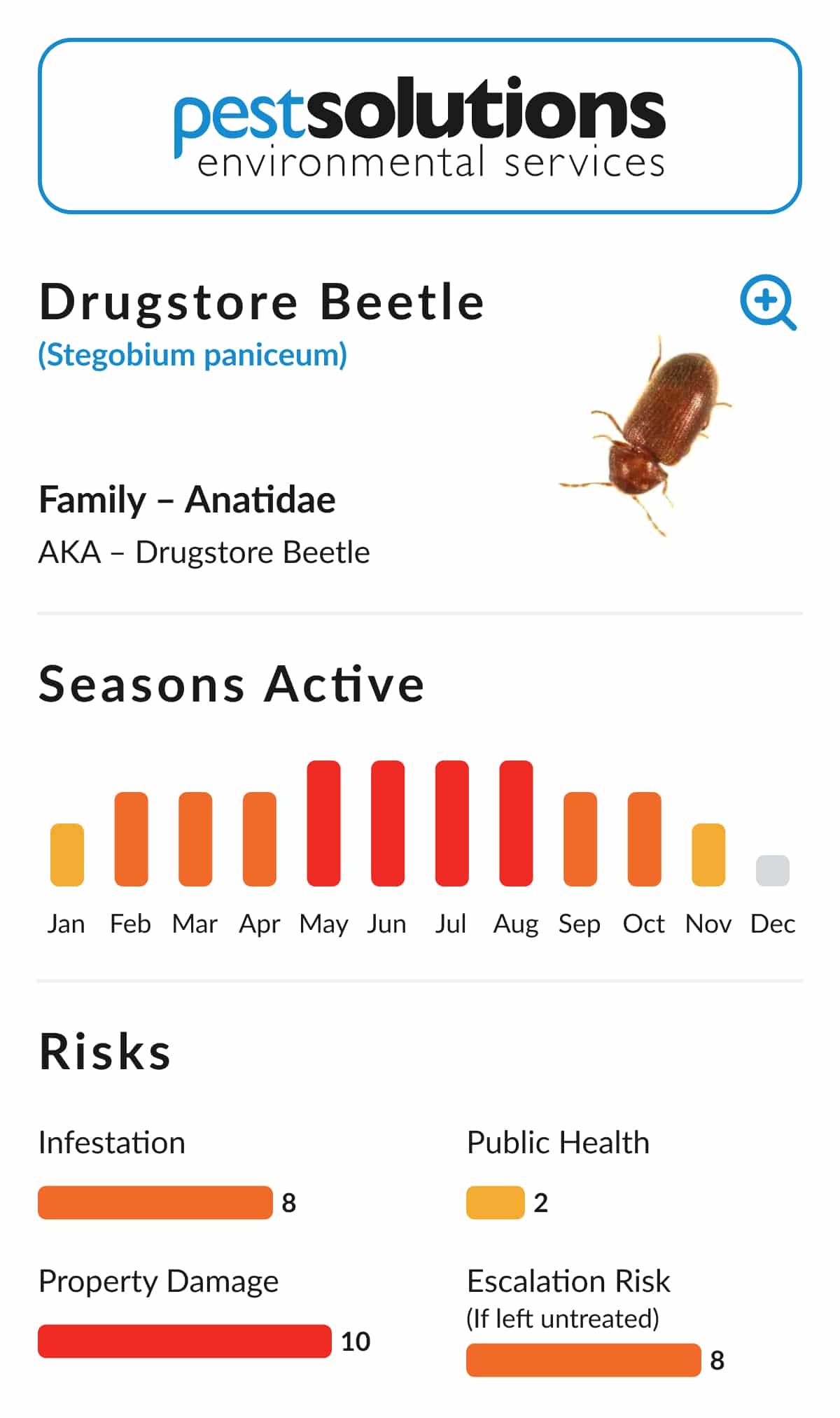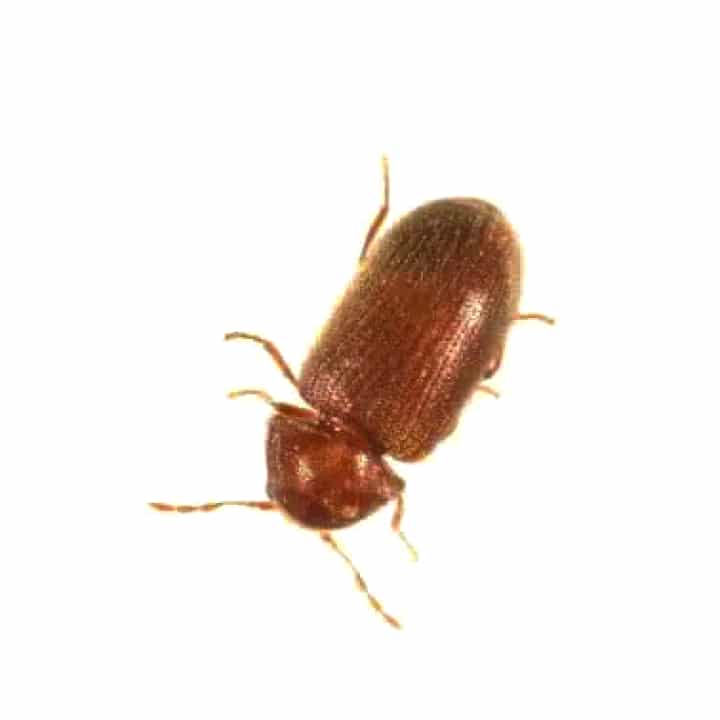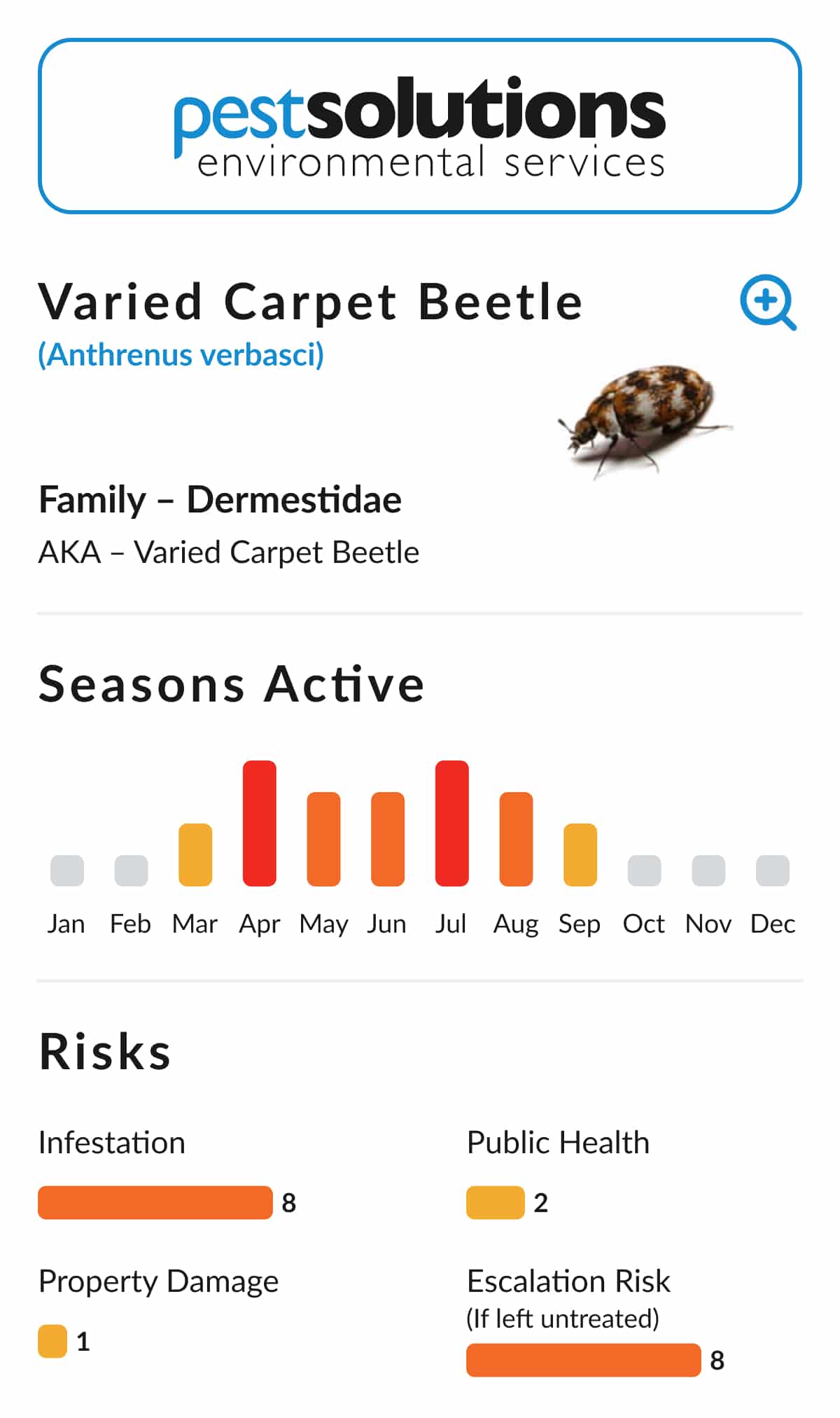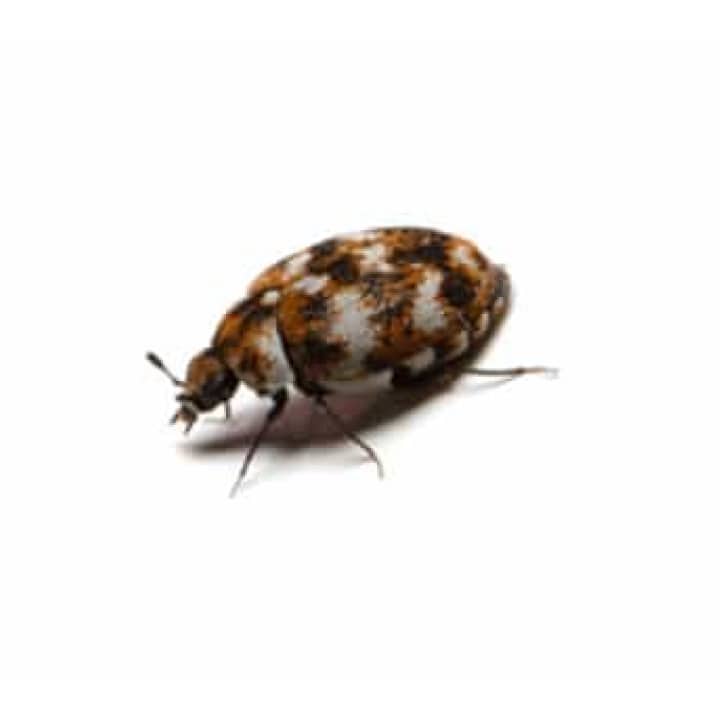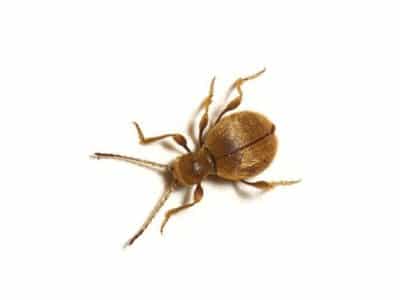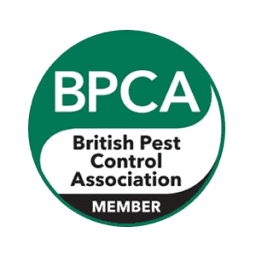Biology – Golden Spider Beetle (Niptus hololeucus)
The Golden Spider Beetle prefers a vegetable-based diet and, unlike many other stored product pests, the adult beetles require access to drinking water. It is not often seen in large numbers and is typically only a minor contaminant in food storage environments.
However, like other spider beetle species, the larvae of Niptus hololeucus can cause damage by chewing and boring into packaging materials. This behaviour may lead to compromised storage integrity and increase the risk of further contamination.
Habitat and Distribution – Golden Spider Beetle (Niptus hololeucus)
This species occurs quite commonly in the UK and is found in a variety of environments including flour mills, animal feed production sites, food warehousing facilities, and private homes. Despite its distinctive golden appearance, it is usually encountered in low numbers and does not typically cause large-scale infestations.
Why They’re a Problem – Golden Spider Beetle (Niptus hololeucus)
Although not generally present in large numbers, Golden Spider Beetles are capable of contaminating stored products. Their larvae chew into packaging materials, potentially exposing foodstuffs to contamination and further pest intrusion. While their presence is often limited, their visibility and the damage they can cause to packaging still make them an important pest to monitor and control in food-handling environments.
Control and Prevention – Golden Spider Beetle (Niptus hololeucus)
Control measures for the Golden Spider Beetle follow the same principles used for other spider beetle species. These include:
- Improving hygiene by removing old food residues and cleaning out potential harbourage sites
- Removing old bird nests, particularly in lofts or eaves, where spider beetles may originate
- Applying approved residual insecticide sprays or dusts to cracks, crevices, and the surrounding structure
- In cases of larger infestations, professional fumigation may be required
Maintaining high sanitation standards and sealing potential entry points can help prevent infestations from becoming established.
Professional Support – Golden Spider Beetle (Niptus hololeucus)
Although the Golden Spider Beetle is typically found in small numbers, its potential to damage packaging and contaminate stored products makes it important to address any signs of activity quickly. If you suspect an infestation in your home or business, professional treatment can help ensure the problem is properly dealt with.
For expert advice or to book a pest control inspection, visit https://www.pestsolutions.co.uk.
